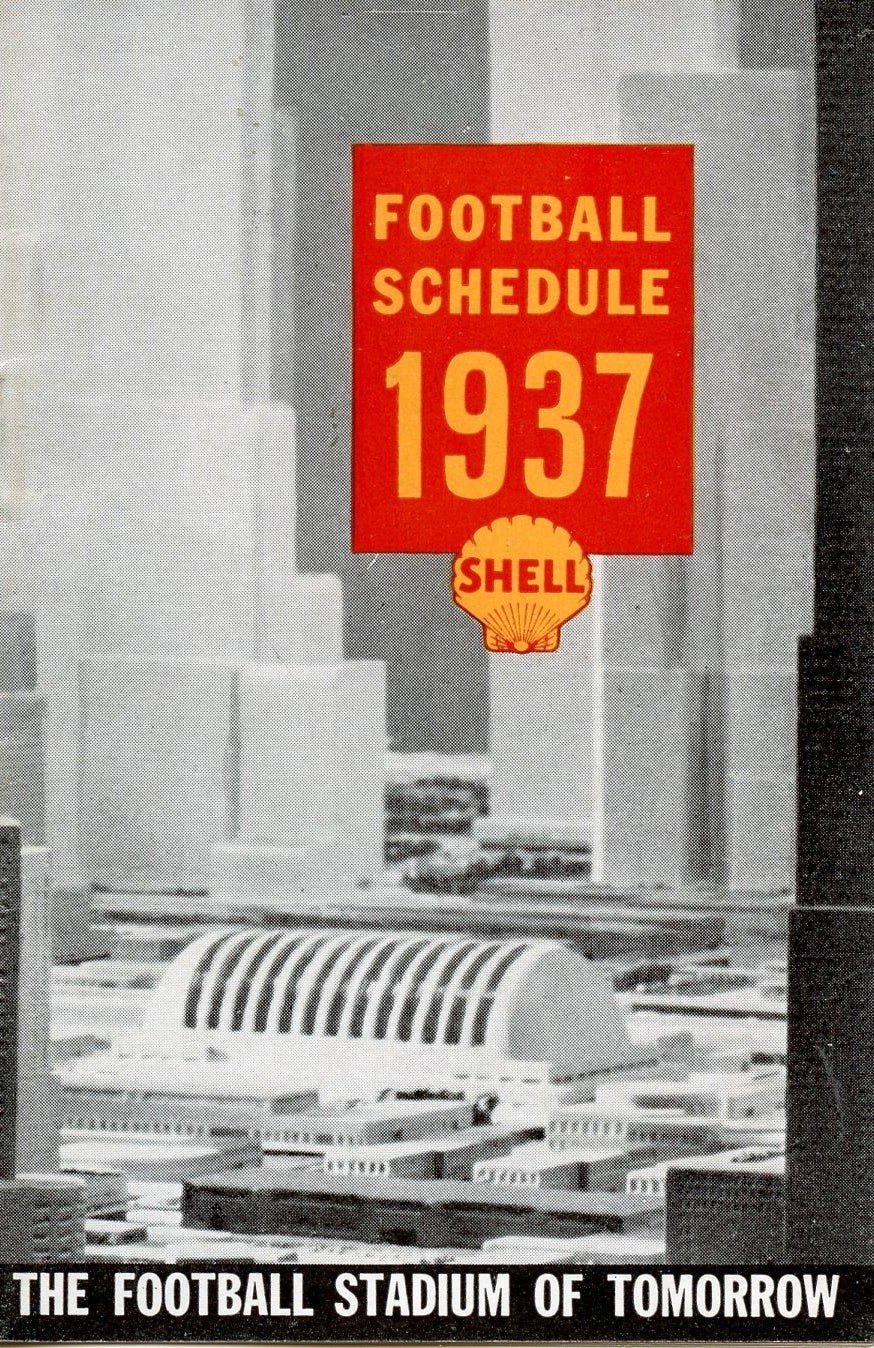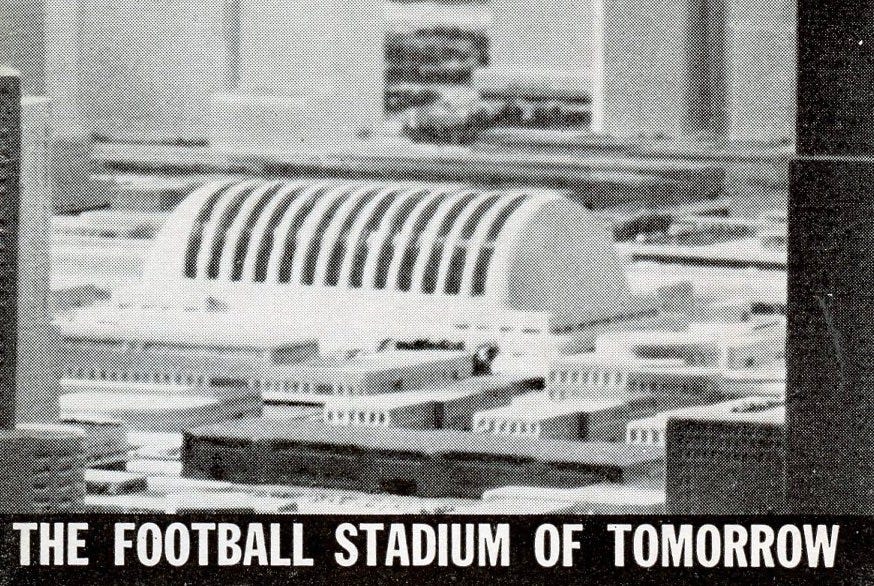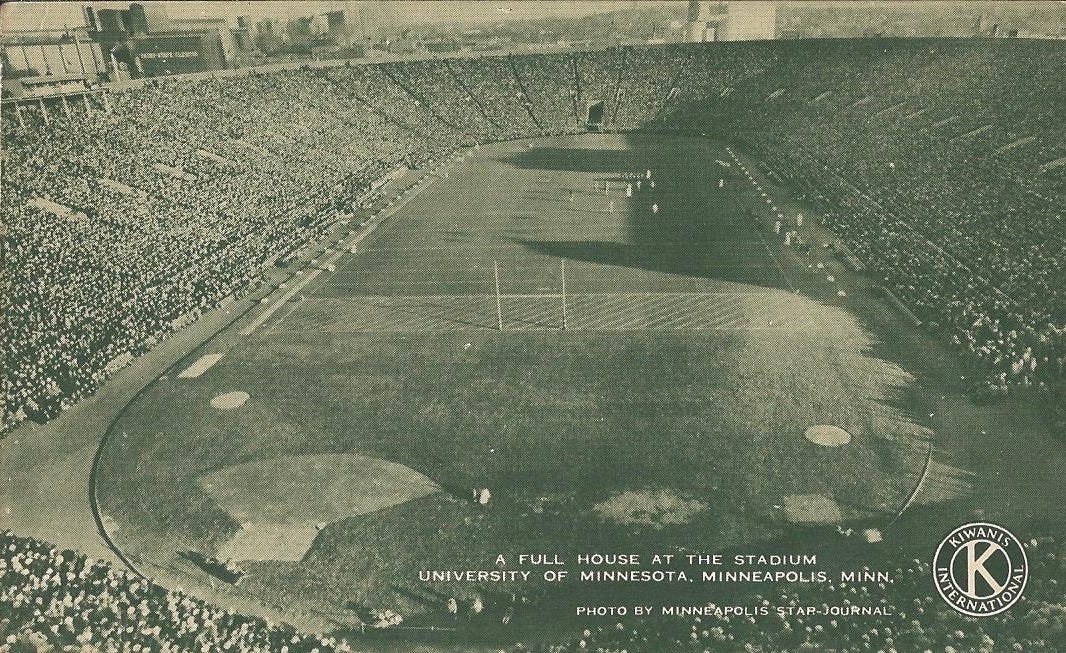A Look Back on Football Stadiums of the Future
The game of football witnessed tremendous change over the years. Some parts of the game’s evolution were planned, others emerged, and things often did not turn out as everyone expected. Predicting the future is challenging since it requires understanding how coming technological and social changes will intersect. Typically, futurists accurately predict some elements of the future while missing others, so let's look at past predictions regarding future football stadiums.
Predictions of the future often reflect perceived solutions to the shortcomings of the present, and that was the case with early football stadiums. The desired features of new stadiums addressed the unappealing aspects of existing stadiums. The first futuristic football stadium came from the crew that designed Harvard Stadium, the first permanent collegiate stadium. It addressed the need for ongoing maintenance of wood bleachers and the fact that they periodically collapsed or burned to the ground.
Other concrete and steel stadiums followed, trying to meet the competing demands of having enough capacity to handle the large crowds attending rivalry games while keeping the seats close to the action. The Yale Bowl was the mistaken model for some new stadiums, but its elliptical shape left only 35 percent of its seats between the goal lines. Bigger alone was not always better since adding rows and deeper bowls placed fans farther from the action. As one columnist commented after 105,000 witnessed the Army-Navy game in Philadelphia's single-tiered Municipal Stadium:
The day is coming when stadiums seating from 150,00 to 200,000 will be devised and erected. Adding that many seats, spreading upwards and outwards, would not be satisfactory now. The farthest seats are too far from the football field today.
So the football stadium of the future will have to be a great double-deck affair similar to Yankee Stadium.
Loyola Stadium at New Orlean is double-decked.
Norris, Bobby, 'In The Press Box,' Macon Telegraph (GA), December 18, 1936.

Other multi-tiered stadiums built or renovated in the 1920s followed a horseshoe or rectangular design (e.g., Ohio Stadium, Franklin Field, Illinois' Memorial Stadium). Rather than growing out, they grew up.
Others built new single-tier stadiums in the 1920s, like Minnesota's Memorial Stadium, which opened in 1924. It had a single-tier, with 40 percent of seats between the goal lines, and sat in an urban setting, which led to traffic issues.
The shortcomings of many stadiums built in the 1920s and 1930s were apparent, though the Depression and WWI meant that fixes were few. By the 1940s, the wishlist among Minnesota loyalists included:
Better sight lines via multi-tier design and no running track between the fans and field
A nearby train station and ample vehicle parking
Ample concessions areas and restrooms
Escalators to access the upper deck
Lighting for night games

However, the designers in Minnesota focussed on practical solutions to the problems of the day. They were not visionaries and did not hold a candle to Norman Bel Geddes, a top industrial designer who influenced the Streamline Moderne movement that shaped planes, trains, automobiles, and other household and architectural designs in the 1930s and 1940s. Bel Geddes developed a City of the Future concept in the mid-1930s, later featured in his and General Motors' Futurama exhibit at the 1939 World's Fair. (The Bel Geddes name may be familiar to some due to his daughter, Barbara, who played Miss Ellie Ewing on the TV show Dallas.)
The City of the Future eliminated traffic congestion by building expressways connected to a nationwide network, much like today's interstate highway system. It also pointed to covered stadiums with air conditioning and "scientific" lighting.


After WWII, Bel Geddes designed an Ebbets Field replacement that was never built. It could handle baseball or football games and came with a sliding roof that kept bad weather out or allowed the sun in, depending on conditions.
A later collaboration with Buckminster Fuller resulted in an updated version of the proposed Dodger Stadium with a plastic dome.

Of course, WWII also brought us into the atomic age, filling us with both dread and optimism. The optimists saw a world of boundless energy to heat and light our homes and football stadiums. They foresaw football fans in 1975 watching the big high school rivalry game on Thanksgiving Day in a 30,000-seat stadium whose transparent plastic roof handled rain or shine. (They did not mention the need for AstroTurf, of course.)

Since these futurists laid out their vision of stadiums to come, every NFL team but one has built a new stadium, and only a few FBS stadiums have not been constructed or substantially renovated to include perks such as luxury seating. While they certainly missed elements of football stadiums to come - artificial turf, video scoreboards, technology for fans, nostalgic designs - they captured many elements that came to fruition over the following decades. The Bel Geddes-Fuller collaboration, for example, looks much like the all-purpose Veterans, Riverfront, and Busch Stadiums that arrived a decade or two later.
The accuracies and inaccuracies of the futurists of the past demonstrate the challenges of predicting the future. What are your predictions about the features of football stadiums built from 2040 to 2060?
Football Archaeology is reader-supported. Click here to buy one of my books or otherwise support the site.






